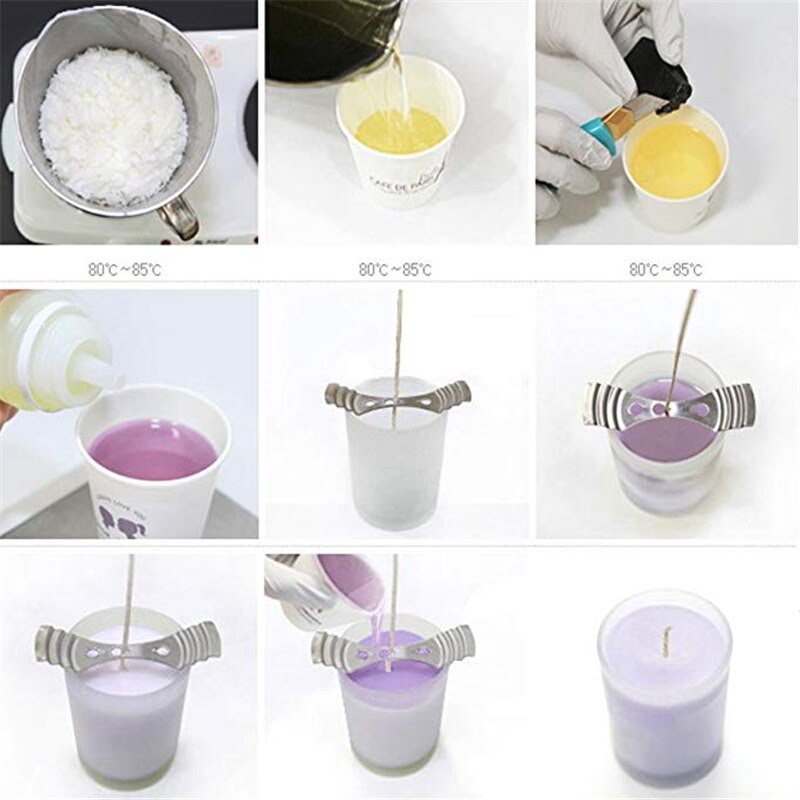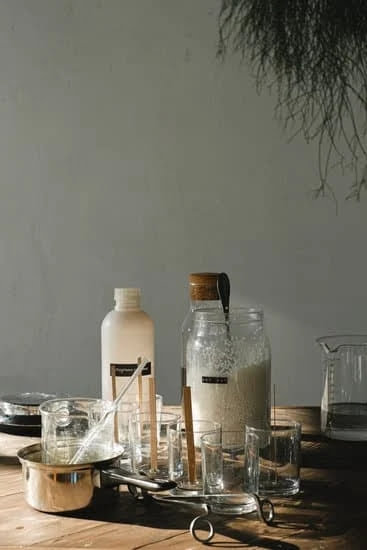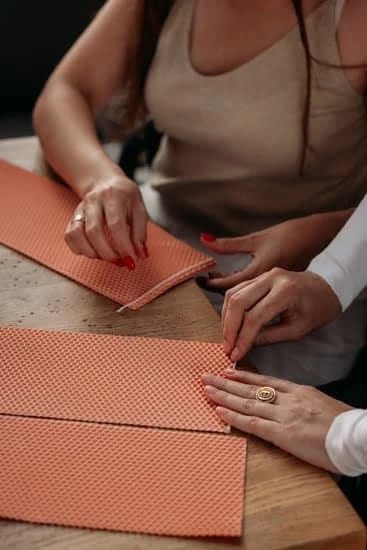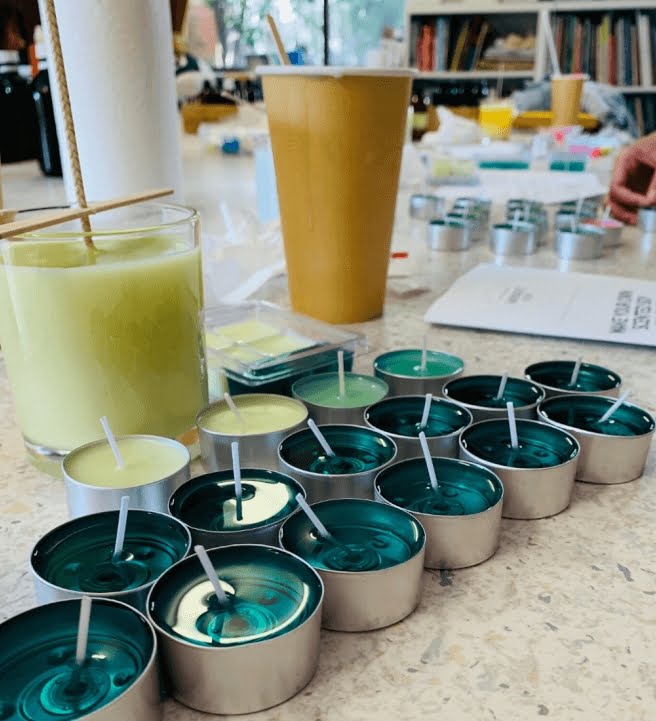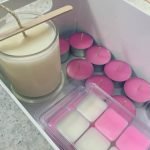Candle making tea lights have been a popular pastime for many individuals who enjoy creating their own unique and personalized candles. Whether it’s to decorate your home, create the perfect ambiance for a special occasion, or simply to relax and unwind, tea lights are a versatile and enjoyable option for candle making enthusiasts.
In this article, we will delve into the world of candle making tea lights and explore the history and origin of these delightful little candles, the types of wax and wicks used in their production, as well as how to select the right fragrance for your homemade creations.
The history and origin of tea lights is an interesting topic that sheds light on their humble beginnings. From their early uses in religious ceremonies to their modern-day role in creating a cozy atmosphere, we will take a closer look at how these tiny candles have evolved over time. Additionally, we will discuss the different types of wax and wicks that can be used in candle making, providing valuable insights for beginners and experienced crafters alike.
Furthermore, choosing the right fragrance for your tea lights is essential to creating an inviting and pleasant environment. We will explore various scent options and provide tips on how to achieve the perfect aromatic experience.
Whether you prefer floral, fruity, or woody fragrances, there is a wide range of possibilities to suit your personal preferences. Stay tuned as we guide you through the step-by-step process of making tea lights at home and offer important safety precautions to ensure a successful and enjoyable candle making experience.
The History and Origin of Tea Lights
Tea lights have become a popular choice for candle making enthusiasts, but where did these small, versatile candles originate? The history of tea lights can be traced back to Europe in the 18th century. Originally used to keep pots of tea warm, they were also utilized as a source of soft light during evening social gatherings. Over time, their functionality expanded to include decorative and aromatic purposes.
In the early days, tea lights were typically made from tallow or beeswax, and were placed in metal containers known as “teashades”. These candles were smaller in size compared to traditional candles and were specifically designed to fit snugly into teapot warmers or candelabras. As the demand for tea lights grew, manufacturers began producing them in various shapes and sizes to cater to different preferences.
Today, tea lights have evolved into an essential component of home decor and ambiance. They are widely used for creating a cozy atmosphere during special occasions or simply for everyday relaxation. Furthermore, modern advancements in candle making technology have led to a wide array of options when it comes to fragrances, colors, and designs for tea lights. Whether it’s for aesthetic appeal or therapeutic benefits, tea lights continue to hold a special place within the craft of candle making.
- The use of tallow and beeswax
- Evolution of tea lights as a part of home decor
- Advancements in fragrances, colors, and designs for modern tea lights
Types of Wax and Wicks Used in Candle Making
When it comes to making tea light candles, the type of wax and wicks used play a crucial role in determining the quality and performance of the finished product. There are several options available for both wax and wicks, each with its own set of pros and cons. Understanding the different types can help you make informed decisions when creating your own tea lights.
Types of Wax
One of the most popular choices for candle making is paraffin wax, known for its affordability and ability to hold fragrance well. Soy wax, on the other hand, is a natural alternative that is biodegradable and produces less soot.
Beeswax is another natural option with a sweet honey scent and clean burn, though it tends to be more expensive. Each type of wax has its own melting point and texture, so it’s important to consider these factors when choosing the right one for your tea lights.
Types of Wicks
Wicks come in various sizes and materials, such as cotton, wood, or paper. The size of the wick determines how much fuel it can absorb and release during burning.
Choosing the right wick is crucial for proper candle burning; too small of a wick may result in tunneling (where only a small hole burns through the center), while too large of a wick may cause smoking or flickering. When making tea lights, it’s important to select pre-tabbed wicks specifically designed for small candles to ensure an even burn.
The choice of wax and wick ultimately depends on personal preference and desired outcome. Experimenting with different combinations can help you find the perfect balance for your homemade tea lights.
Choosing the Right Fragrance for Tea Lights
When it comes to choosing the right fragrance for tea lights, there are a wide variety of scents to consider. The type of fragrance you choose can greatly impact the ambiance and mood you want to create with your tea lights. Here are some popular fragrance options for candle making tea lights:
- Floral Scents: Floral fragrances such as lavender, rose, and jasmine are popular choices for creating a calming and relaxing atmosphere. These scents are perfect for unwinding after a long day or setting a serene mood during a yoga or meditation session.
- Citrus Scents: Citrus fragrances like lemon, orange, and grapefruit are known for their energizing and uplifting properties. They can help freshen up a space and boost your mood, making them great choices for morning or daytime use.
- Woody Scents: For a warm and cozy feel, woody fragrances such as cedarwood, sandalwood, and pine are excellent options. These scents are ideal for creating a comforting and inviting atmosphere, especially during the colder months.
When selecting a fragrance for your tea lights, it’s important to consider the purpose of the candles and the preferences of those who will be enjoying them. Whether you’re looking to promote relaxation, increase focus, or simply add an inviting aroma to your home, there’s a scent that’s perfect for every occasion.
In addition to traditional fragrance options, you can also experiment with unique combinations or customize scents by mixing essential oils. This allows you to create personalized aromas that cater specifically to your tastes and needs. Ultimately, when choosing the right fragrance for your tea lights, don’t be afraid to get creative and have fun with different scent profiles.
Step-by-Step Guide to Making Tea Lights at Home
Gather Your Materials
Before you begin making tea lights at home, gather all the necessary materials. You will need wax, wicks, a double boiler, a thermometer, fragrance oil (if desired), and tea light molds or containers.
Melting the Wax
Using a double boiler, melt the wax to the appropriate temperature according to the type of wax you are using. It is essential to monitor the temperature closely to avoid overheating and causing a fire hazard. Once the wax is thoroughly melted and reaches the correct temperature, remove it from the heat source.
Assembling Your Tea Lights
Place your pre-tabbed wicks in each tea light mold or container. Carefully pour the melted wax into each mold, ensuring that the wick stays centered. If you want to add fragrance to your tea lights, do so at this stage by adding a few drops of fragrance oil into each mold before pouring the wax.
Once your tea lights have cooled and solidified, trim any excess wick and they are ready for use. Making your own tea lights at home allows for customization of color, scent, and size, providing a unique touch to your candle collection while also being cost-effective and fun.
Safety Precautions for Candle Making
Candle making tea lights can be a fun and rewarding hobby, but it’s important to prioritize safety when working with hot wax and open flames. By taking the necessary precautions, you can minimize the risk of accidents and ensure a safe and enjoyable candle-making experience.
One of the most important safety measures when making tea lights is to work in a well-ventilated area. This helps to dissipate any fumes from the melting wax and reduces the risk of inhalation. Additionally, it’s crucial to keep flammable materials away from your workspace and never leave melted wax unattended on a heat source.
Another key safety consideration is proper handling of hot wax. When working with melted wax, always use heat-resistant gloves or mitts to protect your hands from burns. It’s also advisable to have a fire extinguisher nearby in case of any accidental fires, as well as a first aid kit for treating minor burns or injuries.
In addition to these precautions, it’s essential to use high-quality materials such as soy or beeswax and cotton wicks that are specifically designed for tea light candles. Using subpar ingredients can increase the risk of accidents and reduce the overall quality of your homemade tea lights.
| Safety Precautions | Importance |
|---|---|
| Work in a well-ventilated area | Minimizes risk of inhalation from fumes |
| Use heat-resistant gloves or mitts | Protects hands from burns when handling hot wax |
| Use high-quality materials | Reduces risk of accidents and improves candle quality |
Decorative Ideas for Displaying Tea Lights
When it comes to displaying tea lights, there are numerous creative and decorative ideas to consider. These small candles can add a charming touch to any space, whether it’s a cozy corner in your home or an elegant centerpiece for a special event.
One popular option is to place tea lights in clear glass holders or votive cups, allowing the gentle glow of the candle to shine through. This not only creates a warm and inviting atmosphere but also protects the flame from drafts.
Another beautiful way to display tea lights is by using decorative holders or trays. Whether it’s a rustic wooden tray, an ornate metal holder, or a sleek marble dish, these accessories can enhance the visual appeal of your tea lights while providing a functional and stylish base for them. You can also get creative with unconventional holders such as hollowed-out fruits or vegetables, vintage teacups, or even seashells for a unique and eclectic look.
For special occasions or events, consider creating stunning arrangements with tea lights by incorporating other decorative elements such as flowers, foliage, or seasonal accents. From floating tea lights in water-filled bowls to clustering them together in decorative arrangements on tables or mantels, there are endless possibilities for showcasing these petite candles in an eye-catching way that suits your personal style and preferences.
Ultimately, the key is to have fun experimenting with different display options and let your creativity shine when showcasing your homemade candle making tea lights.
Benefits of Using Tea Lights for Aromatherapy and Relaxation
Tea lights are not just for creating a cozy atmosphere in the home; they can also be used for aromatherapy and relaxation. The use of scented tea lights has become increasingly popular for their ability to create a soothing and tranquil environment. These small candles, typically made from paraffin wax or soy wax, are infused with various essential oils such as lavender, eucalyptus, and chamomile to produce calming fragrances that can help relieve stress and anxiety.
Aromatherapy using tea lights is known to have several benefits for mental and emotional well-being. The inhalation of essential oil vapors released by the burning candles can stimulate the limbic system in the brain, which is responsible for emotions, behavior, and memory.
This can result in a sense of relaxation and improved mood. Additionally, some essential oils have been found to have specific therapeutic properties; for example, lavender is known for its calming effects, while peppermint is often used to alleviate headaches and improve concentration.
In addition to their aromatherapy benefits, tea lights can also be used during meditation or yoga practices to create a serene ambiance. The soft glow of these candles combined with their gentle scent can enhance the overall experience and promote a sense of tranquility.
Furthermore, the act of lighting a candle can be symbolic of setting an intention or creating a sacred space for self-reflection and mindfulness. Whether used individually or clustered together in decorative holders, tea lights offer a simple yet effective way to incorporate relaxation techniques into daily routines.
| Benefits | Examples |
|---|---|
| Promotes relaxation | Lavender-scented tea lights |
| Aids in stress relief | Chamomile-scented tea lights |
| Enhances meditation practice | Eucalyptus-scented tea lights |
Conclusion and Tips for Successful Candle Making Tea Lights
In conclusion, making tea lights can be a fun and rewarding experience for anyone interested in candle making. Whether you are a beginner or experienced crafter, the process of creating your own tea lights allows you to customize the fragrance, color, and design to fit your personal preferences and aesthetic.
When making tea lights at home, it’s important to consider safety precautions such as using the appropriate equipment, working in a well-ventilated area, and handling hot wax with care. Additionally, choosing the right type of wax and wick for your tea lights is essential for achieving a clean and long-lasting burn.
For those interested in using tea lights for aromatherapy and relaxation purposes, selecting the right fragrance can enhance the overall experience. From soothing lavender to invigorating citrus scents, there are endless options to explore when creating your own customized tea lights.
Overall, with the proper knowledge and precautions in place, anyone can successfully make their own tea lights at home. Whether for personal use or as gifts for friends and loved ones, homemade tea lights are a wonderful way to add warmth and ambiance to any space. So why not give it a try and start creating your own beautiful tea lights today?
Frequently Asked Questions
Can You Use Tea Lights to Make Candles?
Yes, tea lights can be used to make candles. They are small, usually in aluminum cups, containing wax and a wick. When the wax is melted, it forms a pool around the wick and burns.
What Wax Do You Use for Tea Lights?
The wax commonly used for tea lights is paraffin wax, which has a low melting point and can easily be poured into small containers like the ones used for tea lights. It is also cost-effective and readily available.
How Do You Make Tea Light Candle Wicks?
To make tea light candle wicks, you will need cotton wicking, scissors, and hot glue. Cut the wicking into small pieces, slightly taller than the height of your tea light container. Use hot glue to attach the wick to the bottom of the container and let it dry before pouring the wax.

Welcome to my candle making blog! In this blog, I will be sharing my tips and tricks for making candles. I will also be sharing some of my favorite recipes.

